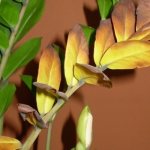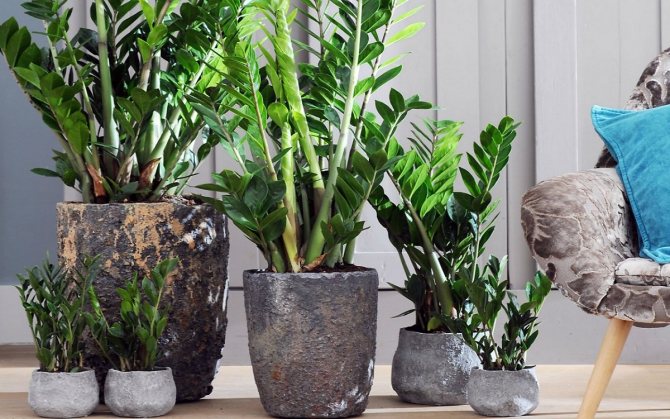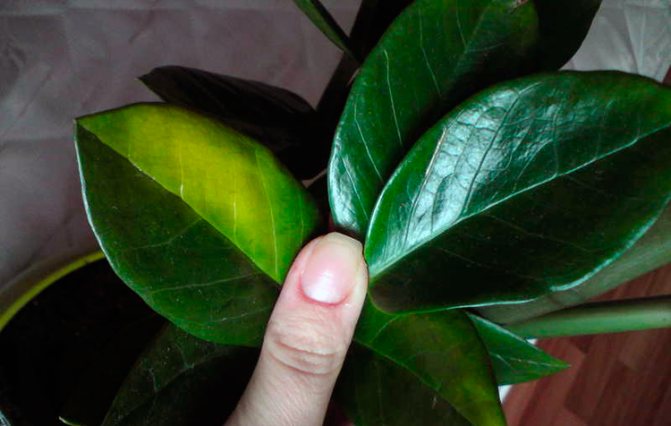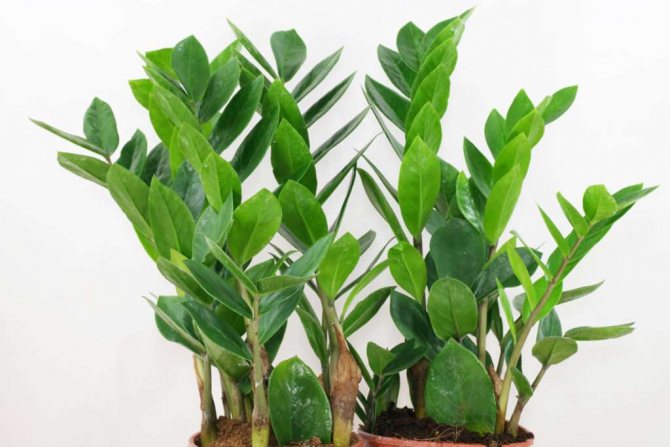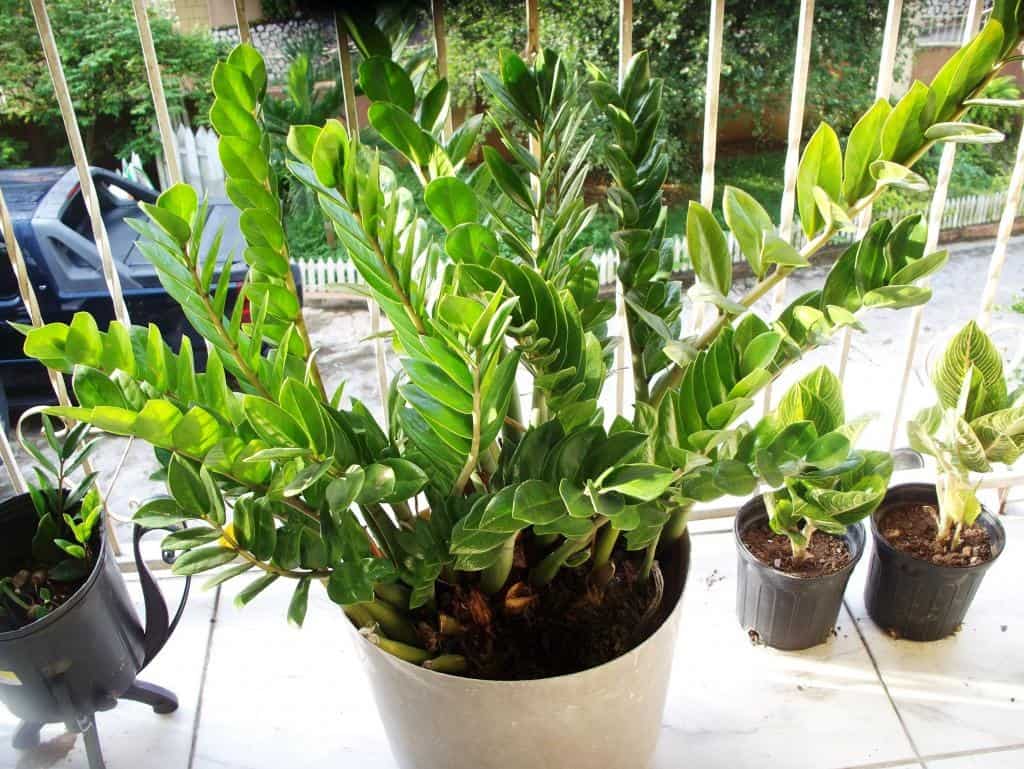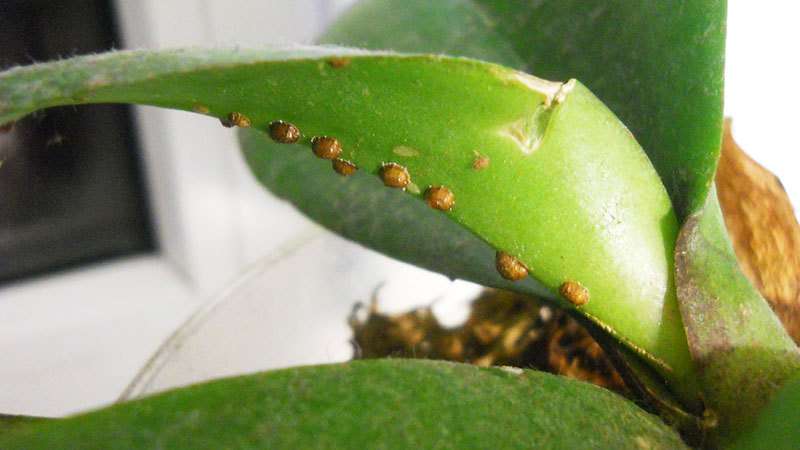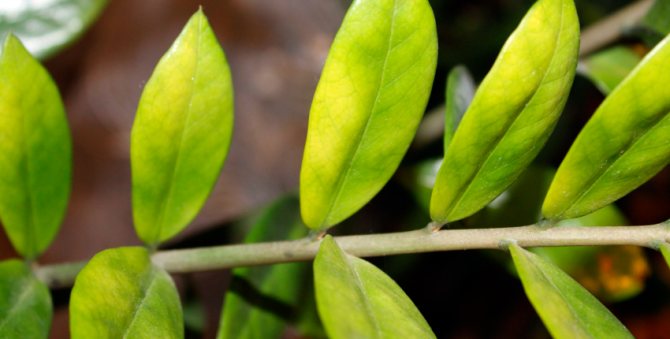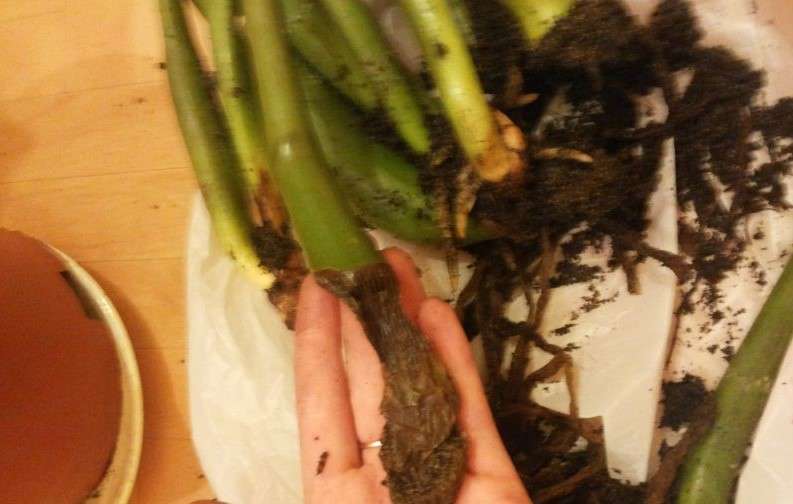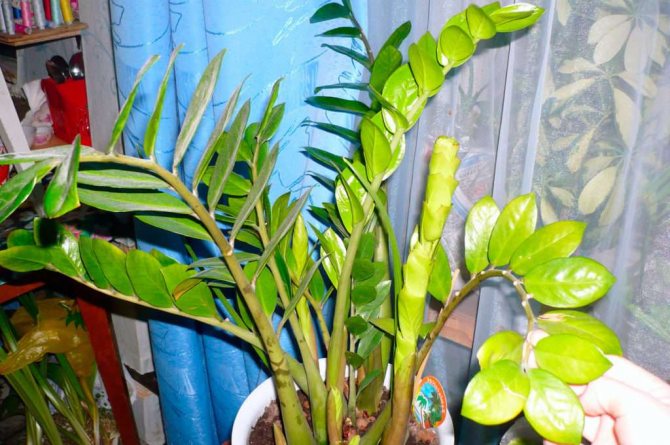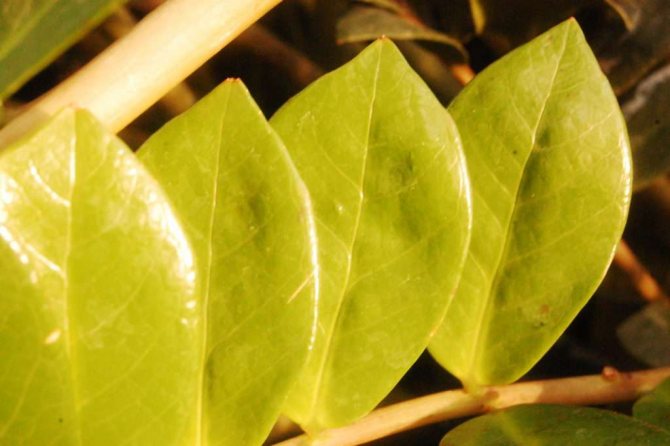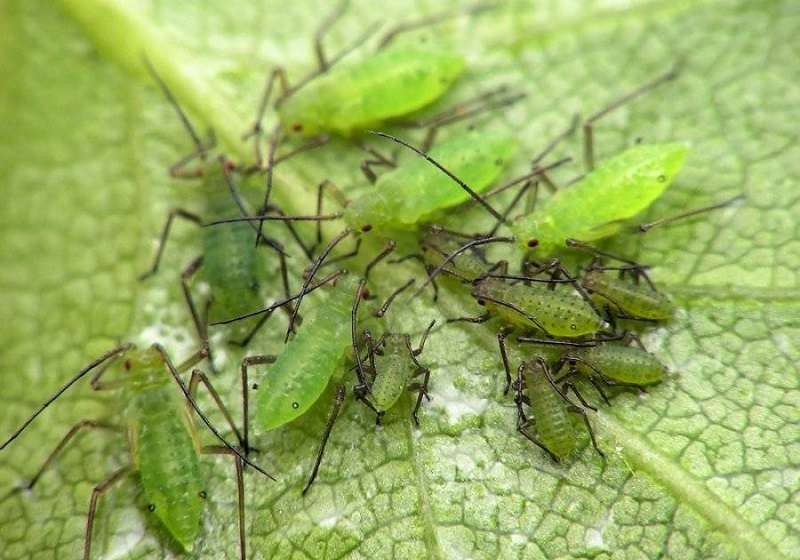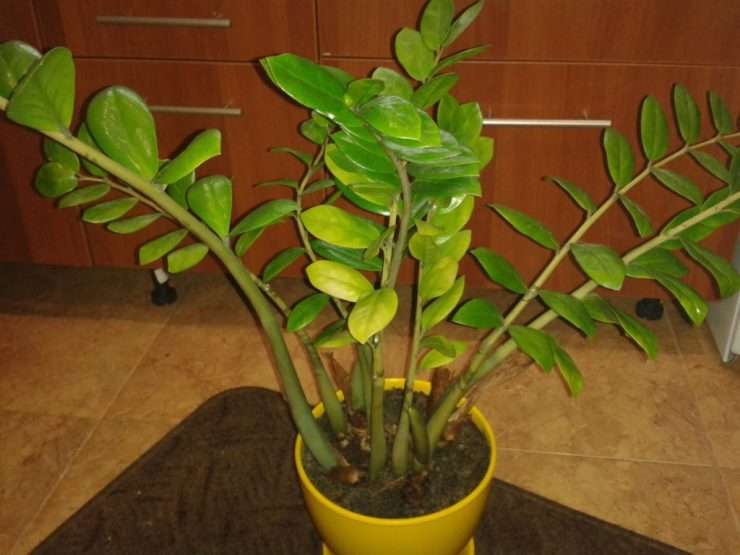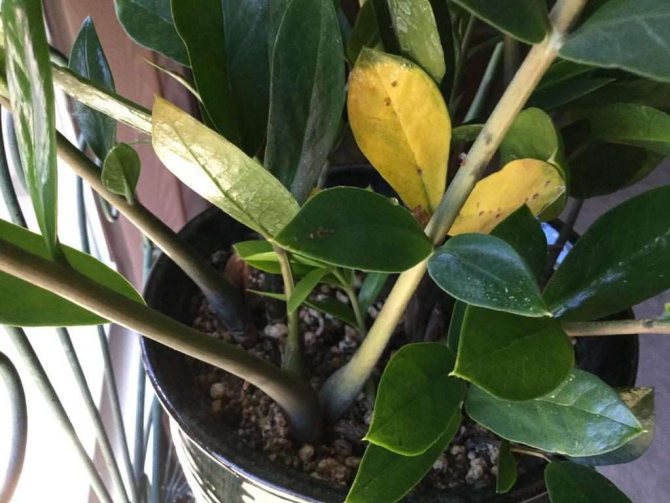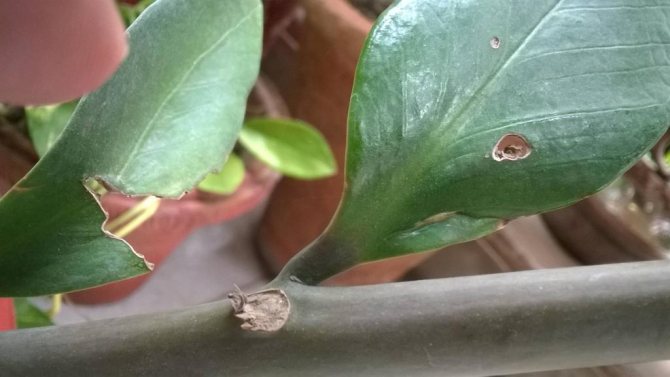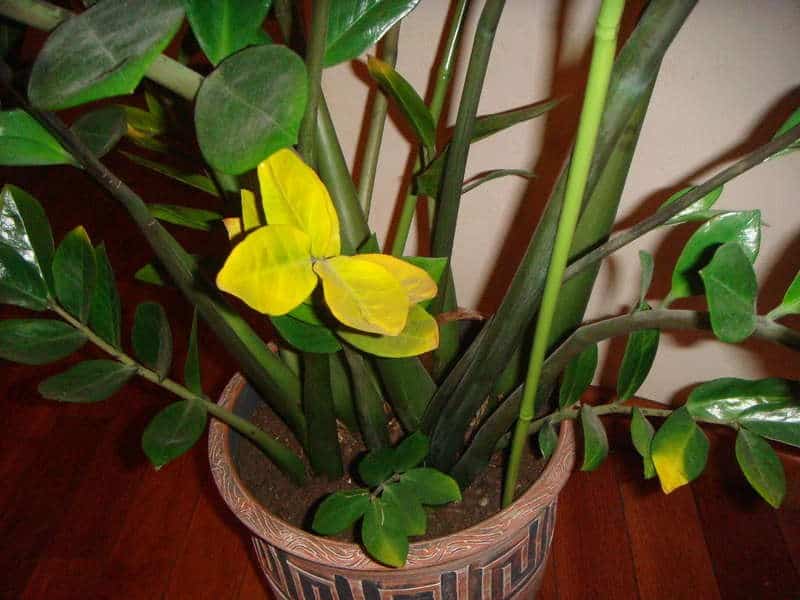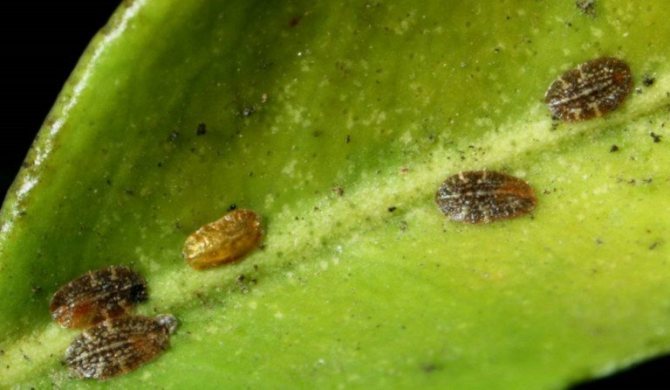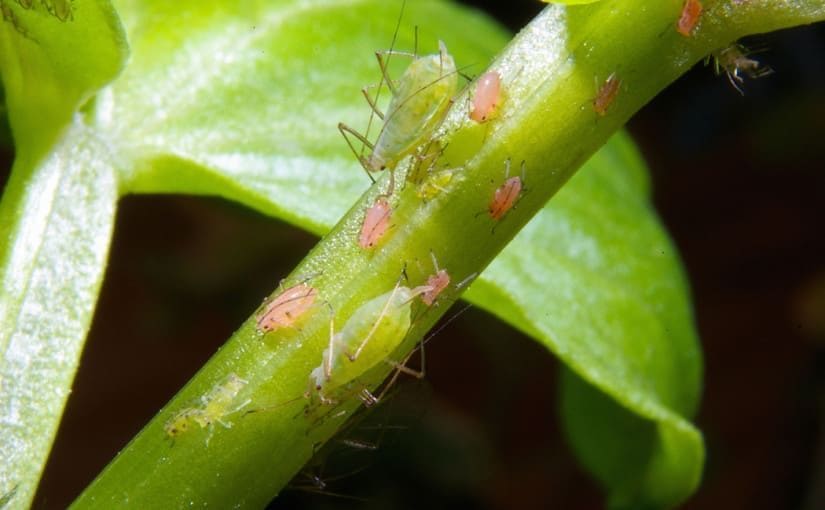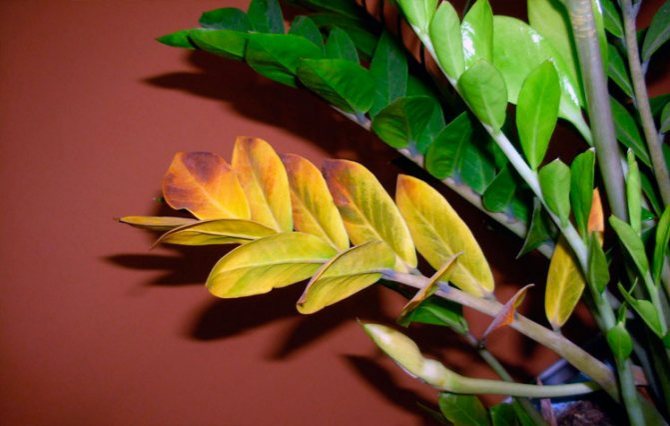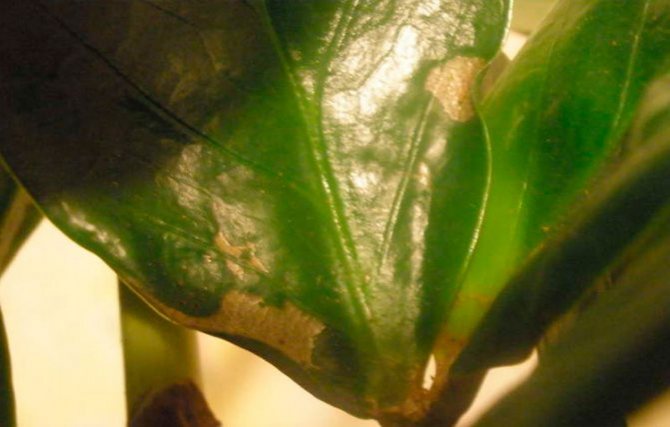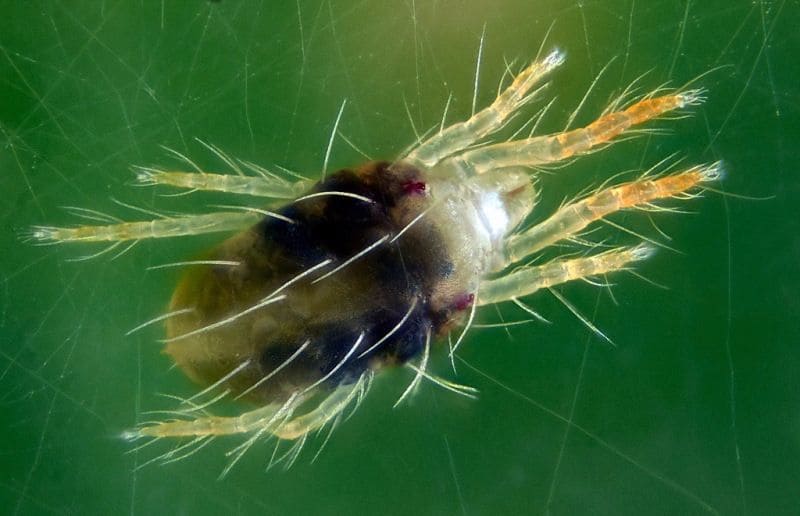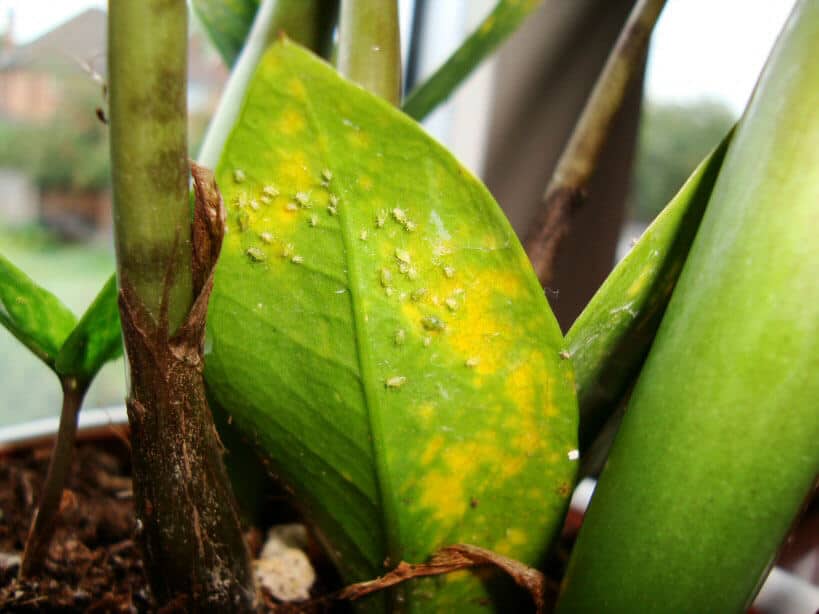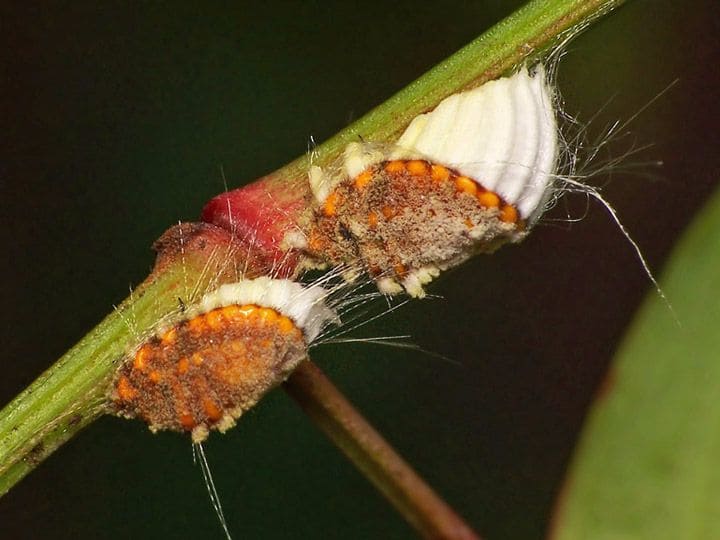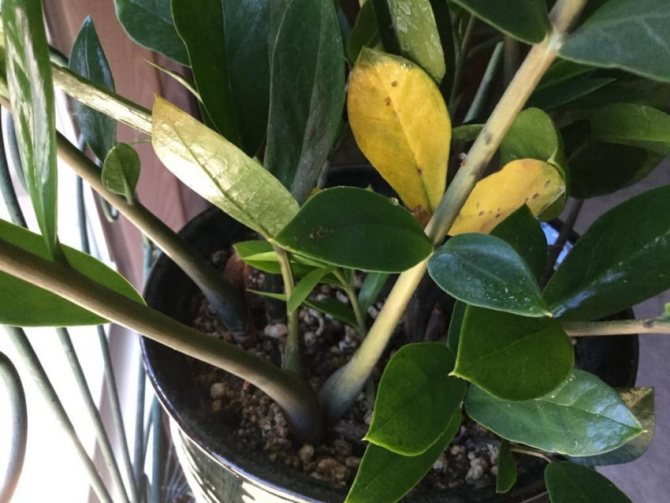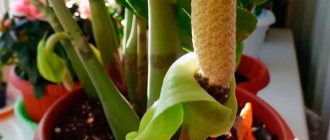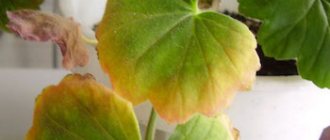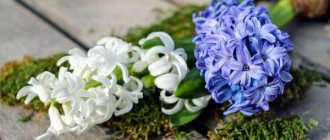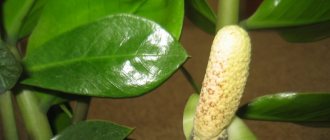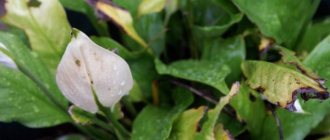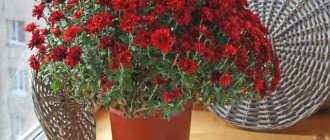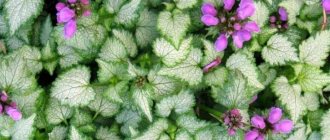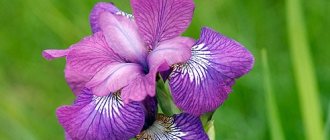Zamioculcas is an exotic plant that came to us from hot Africa. Due to its exceptional decorativeness and unpretentiousness, the plant has recently become more and more popular with flower growers.
However, growing it can cause problems - and the most common of these is yellowing of the leaves. Foliage is the main decoration and pride of the plant; without it, the zamiokulkas loses all its decorative effect. We will find out why the leaves of zamiokulkas turn yellow, and how to cope with this problem.
Zamioculcas in natural and home conditions
Zamioculcas is a native of Africa. But unlike the capricious tropical plants, this creation is by no means gentle. In the wild, zamioculcas is used to tolerating drought and extreme heat. He perfectly adapted to this extreme. The tuberous root stores moisture, which, if necessary, maintains the vitality of the plant. Thick leaf bases serve the same purpose. Petioles (axes or rachis) of feathery leaves grow directly from the tuber. They reach a meter in length, there is a compact form no more than 60 cm high. Dense leathery leaf segments (they are also called feathers) are located on rachis. They are covered with a wax film and consume moisture very sparingly.

Zamioculcas is an unpretentious plant and an excellent find in interior decoration
At home, the zamioculcas, popularly called the dollar tree, is the same ascetic as its wild relative. This plant does not require over-care... Give your African descent a moderately warm (not lower than +15 degrees in winter) and sunny place in your home. By the window on the south side, he will be fine. In the north, zamioculcas will also grow, but much more slowly. And this plant is already developing slowly, the growth of 2-3 leaves per year (not to be confused with feathers) is normal development.
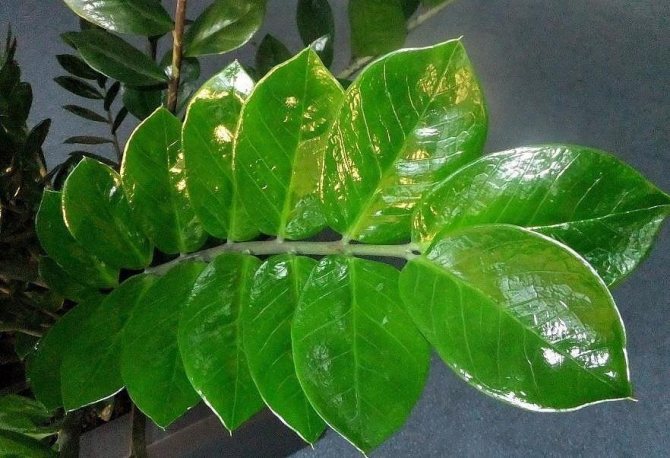

Zamiokulkas leaf plates are covered with a protective wax that prevents moisture evaporation
Yellowness in a plant with improper care
Sometimes new leaves of zamioculcas turn yellow after purchase. At the same time, the plant often slows down in growth. New leaves may not appear at all. In this situation, the best solution is to transplant the culture. To do this, you need to use a ready-made substrate for succulents, which can be purchased in specialized stores. In this case, it is worthwhile to correctly water. It is necessary to spill soil to the full depth. It is important not to allow stagnation of moisture in the pots of the dollar tree, since the root system of the plant is quite capricious and sensitive. Rotting starts pretty quickly.
Sometimes the leaves of zamioculcas turn yellow and fall off, which can be observed in the dollar tree, regardless of its age. This problem is especially often observed with the lower sheet plates. What could be the cause of this problem? Probably, the flower disease is caused by some errors in the cultivation of the crop:
- incorrect location of the plant and the effect of drafts on it;
- excessive watering;
- negative influence of low temperatures.
To please with beauty and health
In order for the plant to be beautiful and healthy, one should not neglect the very simple rules for keeping zamiokulkas.
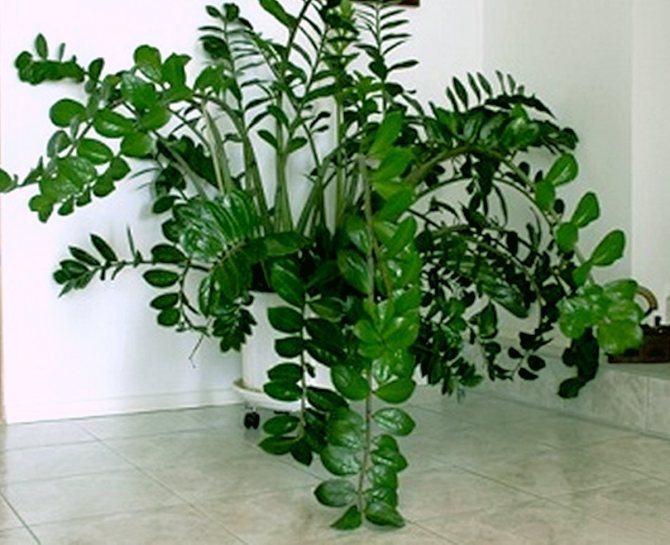

A healthy plant evokes only positive emotions
Shoot growth problems
In order for the zamioculcas to grow greens faster, do not plant it in a spacious pot. The more voluminous the dishes at the flower, the larger the root tuber and the more modest the leaves. The soil for this semi-succulent plant needs porous and poor. Suitable soil for cacti or universal, highly diluted with coarse sand. Vermiculite, perlite and sphagnum moss are not to this flower's liking, experts of zamiokulkas assure. But high-quality drainage: holes in the pot and a layer of expanded clay at the bottom - he will appreciate it.
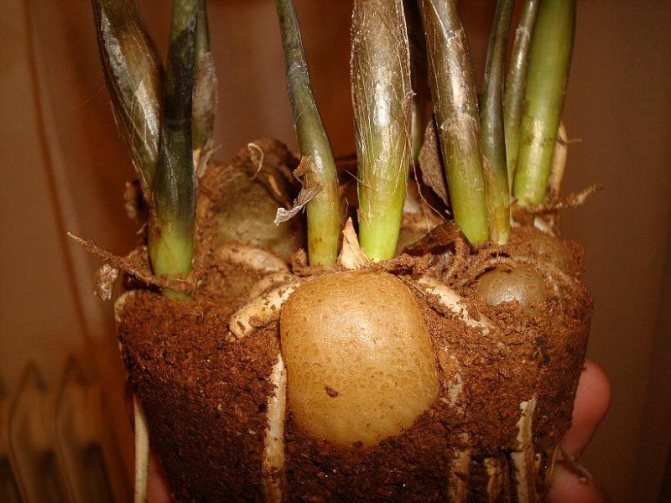

Zamiokulkas tubers store moisture and nutrition in case of drought
Be careful with water: overfilling is worse than underfilling
In the summer, please zamioculcas with outdoor vacations, put it on the balcony or in the garden. The African feels great on a sultry afternoon in the sun. It is not necessary to specially humidify the air for it. From water procedures, to help the flower breathe, leave only dusting the foliage and occasionally a warm shower. When swimming, be sure to cover the soil with waterproof material to avoid waterlogging. It is important not to be too zealous with watering, the zamioculcas will even be glad if they sometimes forget to drink it. Wait until the soil is completely dry, wait another 3-4 days and only then water. But know the limit and with moderation: with prolonged drought, foliage will begin to fall. True, it is not difficult to remedy the situation: if the root is alive, just add water.
Whether watering is necessary, it is convenient to check with a thin wooden skewer. It must be carefully inserted at the edge of the pot to the very bottom, then turned around the axis and pulled out. If wet earth stuck to the skewer, then it is too early to water.
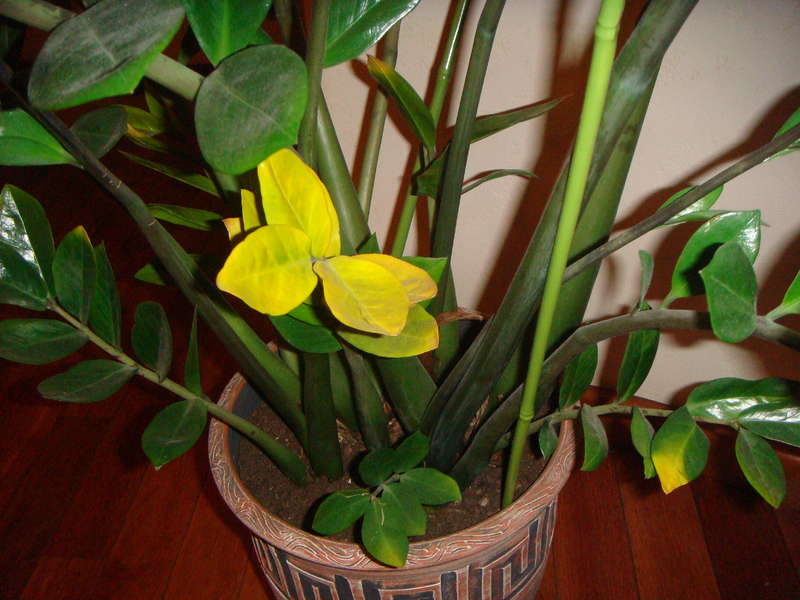

Zamioculcas is afraid of waterlogged soil
But waterlogging of the soil is a sure way to serious problems and diseases: especially difficult, when excess moisture is combined with low temperatures and a lack of lighting. This combination can destroy the main part of the plant - the root, not to mention the yellowing and blackening branches.
Table: they do not allow to grow and develop - diseases and pests
| Diseases | Pests |
| Root rot (tuber) | Spider mite |
| Stem rot | Aphid |
| Chlorosis | Mealybug |
| Fomoz | Shield |
| Spotting | Mushroom gnat (midge) |
| Black | Podura |
For the health of stems and roots - disease prevention
Very often, flower growers say that they looked after zamiokulkas according to the rules, but the plant still got sick or was attacked by pests. The reason is the lack of reasonable prevention. Pathogens or parasites can enter the flower pot if safety precautions are not followed. Phytosanitary control operates at the borders of states. It should be at the entrance to every apartment.
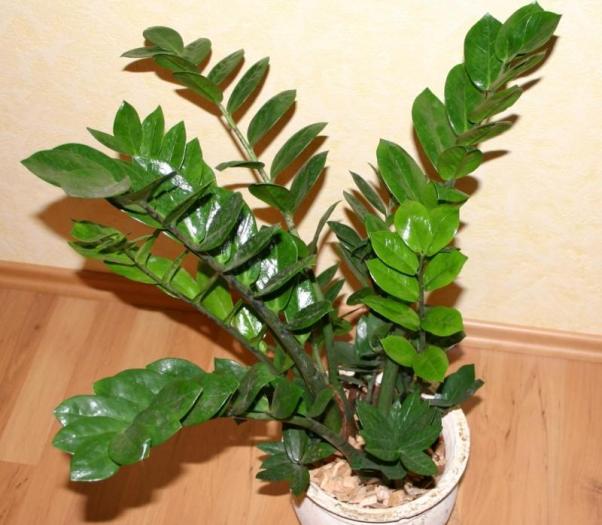

To keep the plants healthy, follow the rules of care and transplantation.
How to ensure plant safety:
- carry out "control at the entrance". When planning to bring home a new plant, whether from a store or elsewhere, make sure it is not infected with disease or parasites. Examine the stems and, if possible, the roots for visible symptoms: spots, dots, other damage. Inspect zamioculcas for pests. A barely noticeable white speck may be a mealybug, and a brown one is a scabbard. It is better to discard the plant with signs of the disease. Such an acquisition will be more of a hassle than a pleasure;
- quarantine for beginners is a must! In your opinion, the plant is perfectly healthy - don't trust the first impression. Problems can appear over time. Don't put the newbie right in with the rest of the colors. Keep it isolated for two weeks, or better for a month. And only after quarantine, introduce the new plant to your neighbors on the windowsill;
- sterility is a guarantee of health. Be careful when replanting zamioculcas.Most bacteria, fungi and parasites spread through the soil. Before planting, disinfect the substrate (including the store one) by calcining, frying in the microwave, and pour over the pot with boiling water. You can also water the new soil with a solution of Fitosporin (other fungicides) or manganese, then dry it.
Video: how to grow a healthy dollar tree
Table: care errors, main diseases, pests
| Symptom | Plant feature | Leaving error | Disease | Pest |
| Zamiokulkas leaves turn yellow | If there is a young growth, there is nothing to worry about. Over time, the old leaves die off. Delete them | Low temperature or waterlogged soil | Root rot | |
| Drops of water appear along the edge of the leaf plates (the zamioculcas “cries”). | For aroid plants, to which the zamioculcas belongs, this is the norm. This is how the plant reacts to rainy weather: when the surface of the leaves cannot cope with evaporation, then special ducts open - the guides | Reaction to high humidity or soil flooding. | ||
| The plant does not give new shoots, it grows slowly | Zamioculcas gives an increase of 2-3 leaves per year - this is the norm | Lack of light. The pot is too spacious, the plant grows a tuber. | Deficiency of microelements: nitrogen, fluorine, copper, molybdenum, boron, chlorine, iodine. | |
| Dark, softened areas on the tuber and roots | Low temperature and waterlogged soil. Heavy soil | Root (tuber) rot | ||
| Dark spots on the petioles | Dark green spots appear on the petioles of mature leaves | Unhealthy wet spot - a consequence of low temperatures, over-watering | Different types of rot or spotting, infection by viruses or bacteria | Defeat by the scabbard |
| The petioles are wrinkled, the feathers are drying | Insufficient watering if the petioles are hard and dry | Root rot if the tissue is soft | ||
| The petioles are thin, sink and fall | Nutrient Deficiency | |||
| The edges of the leaves dry and curl | Overdried soil. Too dry air due to the proximity of heaters. Sunburn | If a white spider is visible, a tick lesion | ||
| Leaves lose color, brighten, turn pale, white spots are noticeable | Chlorosis is a violation of the process of photosynthesis. Infectious chlorosis caused by viruses and fungi | Chlorosis carriers - aphids and mites | ||
| Zamioculcas discards leaf segments | Transplant stress response, cold water | Nutrient Deficiency | On a plant, a colony of small insects - damage by aphids | |
| Solid brown scutes on the leaves, the plant loses its vigor | Defeat by the scabbard | |||
| New shoots dry up, the plant has stopped growing | Drafts by sprinkling with cold water | Root rot | ||
| Zamioculcas turned reddish or orange | Reaction to changes in lighting. Brightening or redness caused by too bright light | Yellow or brown color - possible rot, bacterial or viral disease | ||
| The bases of the leaves thicken | This is a natural phenomenon, moisture accumulates in the thickening of the petioles. | |||
| The plant dries up. Zamioculcas tuber became empty | Phomoz, or dry rot | |||
| Zamioculcas disintegrated, the leaves turned black | Waterlogged soil, not enough light | Root rot. Fungal disease - rabble | ||
| Sticky drops and whitish, like cotton-wool lumps appeared on the leaves. Leaves wither | Mealybug | |||
| Brown moist bloom on the petioles, they soften and die | Waterlogged soil combined with low temperature | If the tissues are softened, it is stem rot caused by fungus. | ||
| Leaves are stretched, the number of leaf plates is reduced, they become paler | Lack of lighting | Lack of fluoride, possibly other elements | ||
| The plant does not develop well. Whitish small insects are visible in the soil | If the insects are bouncy, they are suckers. If black or gray midges fly around, and pests in the soil resemble worms, these are mushroom mosquitoes |
Natural reason
Yellowing of foliage can be observed in zamiokulkas due to a natural cause - aging. The fact is that one stalk of a plant can simultaneously "contain" no more than 17 leaf blades. If the leaves continue to form, the old ones will turn yellow and die off.
Such natural aging leads to the loss of its decorative effect by the flower and often to the panic of the grower. The lower part of the cutting becomes bare, and the top becomes a lush bush of fleshy young leaves.
In fact, nothing can be done with this process - the plant develops as expected. You can only hide the bare shoot from the eyes by turning the pot with the plant to the other side.
Diseases: Treatment and Prevention
The most common cause of malaise of zamiokulkas is waterlogging of the soil. Because of this, the plant is affected by various types of rot. But there are also diseases associated with mechanical injuries, metabolism. They weaken the immune system. And as a result, all the same rot appears.
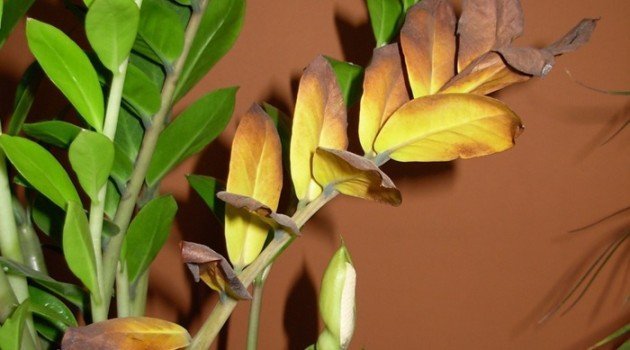

This zamioculcas needs diagnosis and urgent treatment.
Injuries are the cause of many problems
Zamioculcas injuries: a broken branch, frostbite, scratches and tears are not terrible in themselves, but can lead to serious illness, becoming a gateway for infections. If the wounds are left untreated, the plant can become infected. Be sure to disinfect the injured area. You can sprinkle with activated charcoal, sulfur powder, cinnamon (it is a good antiseptic), grease with brilliant green and dry. While healing, the wound will be covered with a layer of dry dead cells, and then healed.
If you accidentally break off a healthy zamiokulkas leaf, it can be rooted. Cut it off above the break point and place it in the water. Roots with a small tuber are soon formed. Then plant the plant in a small pot with light soil.
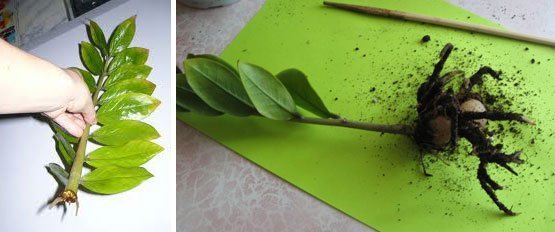

A new plant can be grown from an accidentally broken off leaf of zamiokulkas
Metabolic diseases
These diseases are not infectious, but associated with care errors. The most common are chlorosis, etiolation (light deficiency), deficiency or excess of macro- and microelements.
- chlorosis is a violation of the process of photosynthesis. Zamiokulkas leaves discolor, turn yellow, white spots appear on them. Treat the plant with Fitoverm several times at intervals of 3-4 days. Feed him. For prevention, spraying with iron chelate (Antichlorosin) can be used. Some growers advise to bury a rusty nail in the ground to provide it with iron;
- etiolation is a disease caused by a lack of light. Zamioculcas prefers bright light, but also tolerates shading. This patience should not be overused. If there is not enough light for the plant, the leaves are ugly stretched, discolored, the leaf segments become smaller, they become smaller. Place the zamiokulkas on the sunny side, and in winter, arrange for an artificial backlight for it.
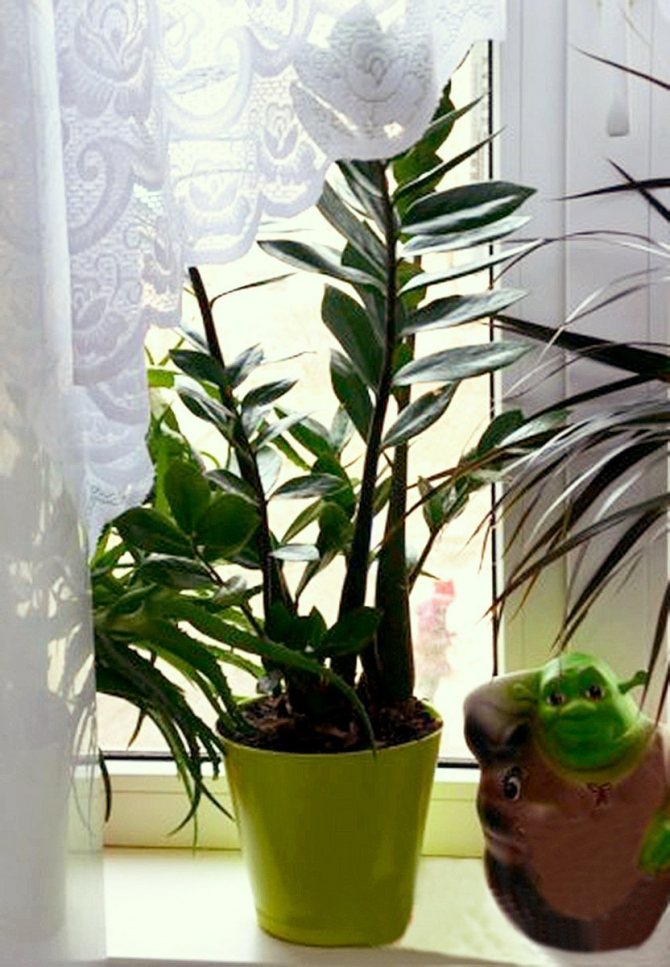

This zamioculcas does not experience a light deficit, which means that etiolation does not threaten it.
Table: Impact of Nutrient Deficiency on Plant Appearance
| External manifestation | Problem |
| Inhibition of leaf growth | Lack of nitrogen |
| Growth slows down, the plant turns pale | Fluoride deficiency |
| Poor root development | Low calcium |
| Development has stopped | Possibly deficient in copper, boron, chlorine or iodine |
Mineral feeding will solve the problem of lack of nutrients. Choose a complex for the plant that will contain scarce elements. Fertilizers for cacti and succulents are usually suitable for zamiokulkas.
When rot appears
Zamiokulkas tuber, its thick petioles are a storehouse for nutrients and moisture. In such a favorable environment, harmful microorganisms multiply with pleasure: fungi, bacteria and viruses. Zamiokulkas tuber - delicious food and a comfortable refuge for them.Sometimes the florist himself, out of inexperience, helps uninvited guests to settle in a pot with a plant. Overmoistening of the soil and air, especially in winter, non-compliance with the temperature regime, contaminated land - all this contributes to the spread of various types of rot, the most dangerous diseases of zamioculcas.


A healthy plant has green leaves and light brown tough potato tubers
Table: varieties of rot, methods of struggle, prevention
| Rot type | Symptoms | Treatment | Prophylaxis |
| Dry rot, or phomosis. Insidious asymptomatic course | The plant at first turns pale, then dries out from the inside. The disease is fleeting. | The disease is detected too late, when it is already useless to take any measures. A plant infected with dry rot will inevitably die. | To prevent phomosis, periodically spray or water zamioculcas with a solution of systemic fungicides, for example, Maxim. |
| Rot of stems (leaves) is provoked by heavy clay soil, which does not provide air and water permeability, excessive watering at low temperatures, injuries, and a bacterial infection that has joined forces causes illness | A wet brown plaque appears on the petioles of the zamiokulkas, the tissues soften and die | This is the most common cause of the death of a flower; you can try to save it by digging out the tuber and removing the affected parts, sprinkling the cuts with crushed coal. The entire plant, both above and below ground, is treated with a systemic fungicide (Oxyhom, Fundazol) and planted in a new pot, completely replacing the substrate. If the process has gone too far, the affected tuber is thrown away, the remaining parts of the leaves are used for reproduction. | Heal all injuries on the plant, observe the care regimen, be sure to keep new acquisitions in quarantine |
| Root (tuber) rot occurs at low temperatures, systematic waterlogging of the soil and stagnant water | Zamioculcas, affected by root rot, if you do not take action, turns yellow, withers and dies. The cause of the disease can be seen only by taking the plant out of the pot. | If a small part of the tuber is rotted:
If the putrefactive process has affected almost the entire tuber, it will have to be thrown away, try to root healthy leaves | Observe the main rule of watering zamiokulkas: moderation and again moderation. Maintain normal temperature conditions |
Dealing with soot, brown and rusty stains
The mob is a disease caused by a fungus that eats the secretions of aphids or mealybugs. The leaves are covered with a black sooty bloom, it is not too dangerous for the plant, but it prevents it from breathing, isolates it from light. Because of this, leaf growth slows down, the plant weakens. Remove deposits with a damp cloth. Then wash the entire plant. Prevention of the mob is a timely fight against insect pests.
Zamioculcas, like other succulents, can infect spots of different origins. They are caused by fungi, viruses, bacteria. Plants with weakened immunity are susceptible to this disease. Stains can appear due to cold drafts, temperature changes or high humidity.
A sign of brown spot is the formation of dry, depressed brown spots on the petioles and leaf plates. They can increase in size, or they can remain unchanged. If the disease progresses, action must be taken. They fight spotting with the same methods as with rot.Cut out damaged leaves, treat the cuts with charcoal and cinnamon, and spray the fungicide with zamiokulkas.
Rust is a type of spotting. The plant is covered with rusty crusts or streaks. One of the reasons is care errors: burns, injuries from droplets of cold water that hit the leaf, a sharp drop in temperature. A fungus enters the injured area and provokes the appearance of rust in other places. Removing crusts and rust stains is not recommended. In their places, the tissue is ugly scarred. Fungicide treatment helps to curb the growth of spotting.
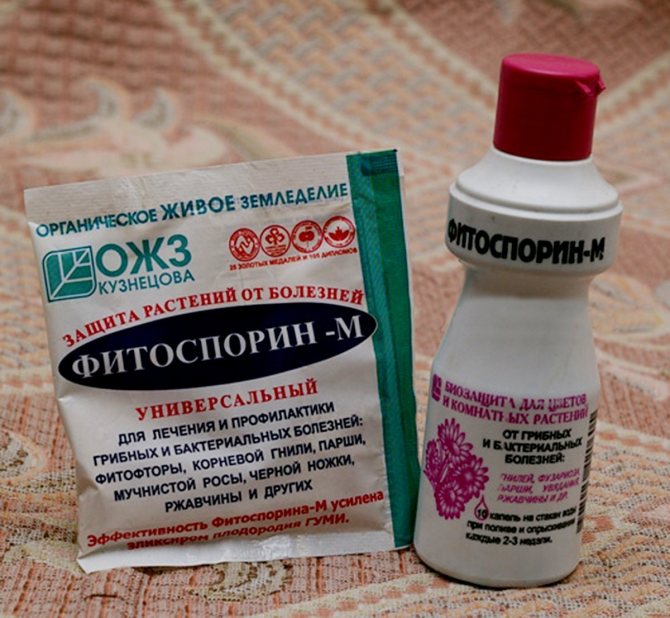

Fitosporin works well in the early stages of rust disease
Sometimes "self-healing" happens: mushrooms cannot stand the combination of dry air and light, and when the zamiokulkas is placed in a very bright, dry place, the spots stop growing.
Photo gallery: putrefactive and other diseases of zamioculcas
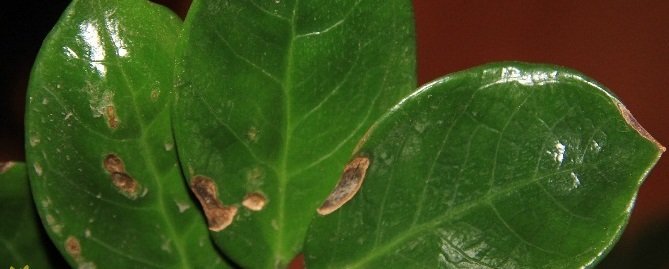

Brownish dry spots appear on the leaves or stems - this is a brown spot
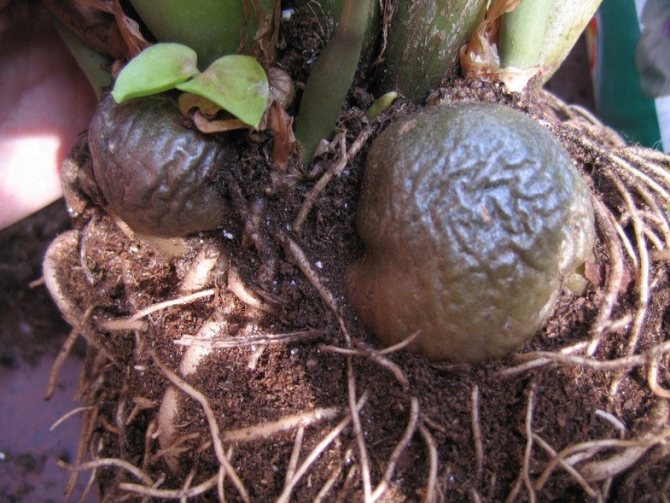

Root (tuber) rot is the most common disease of zamiokulkas
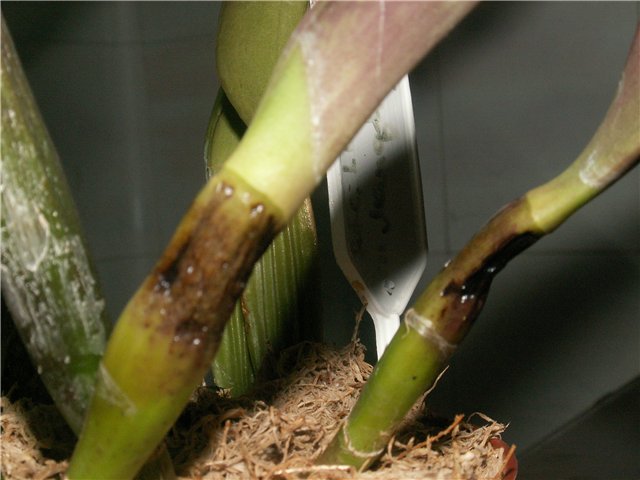

Rot of the stems is caused by a bacterial infection, and excessive moisture provokes the disease
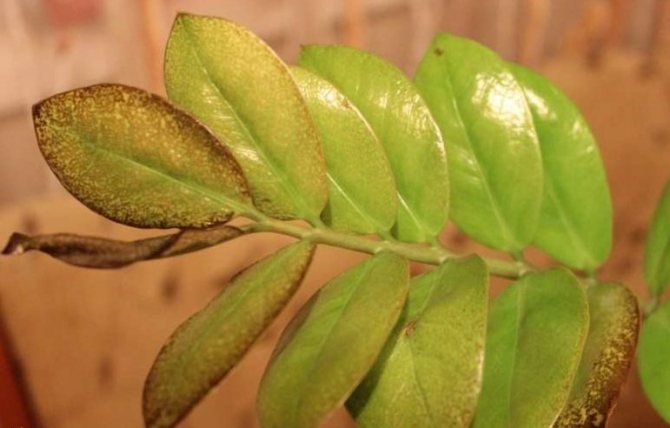

Rust is a consequence of maintenance errors
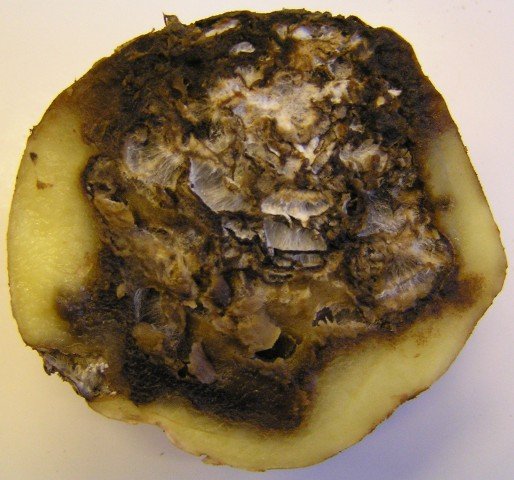

A plant infected with dry rot (phomosis) dies
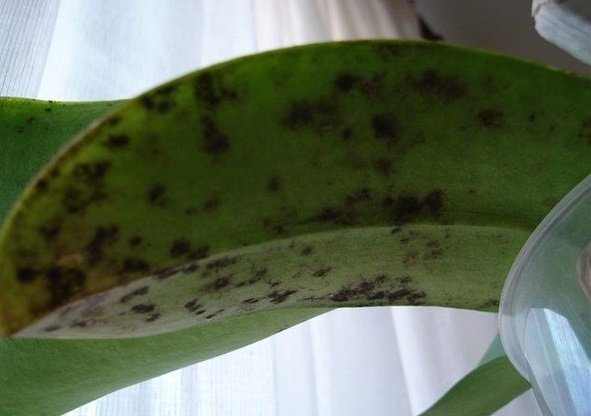

Mobile black is a fungal disease that occurs on plants infested with pests


With chlorosis, the process of photosynthesis is disrupted, the leaves are covered with white and yellowish spots.
Fungicides for the treatment of leaves, trunk, tubers, roots
- Fundazole destroys pathogens of various diseases. Stems and roots are sprayed with a weak solution of up to 0.1%.
- Sulfur is an effective remedy for treating fungal diseases and killing ticks. It is more convenient to use in the form of a powder, dusting the plants.
- Quinosol is an antifungal and antibacterial drug. You can buy it at your regular pharmacy. Dissolve the tablet in 10 grams of water. The solution can be moistened with leaves and water the earth. Used for soil disinfection.
- The drug Maxim is used for soil disinfection and treatment: it helps with fusarium, phomosis, and wet rot. A 2–4% solution is prepared from the preparation for watering and processing plants. Valid for approximately 2.5 months.
- Hom (copper oxychloride) is a very effective remedy against brown spot, rust, and various bacteriosis. For 20 grams of powder, take 5 liters of water. They are processed 5-6 times, after two weeks.
- Fitosporin is a drug for protection against fungal and bacterial infections. Helps only at the initial stage of the disease. Can be used for prophylaxis. A small amount of Fitosporin paste (from the tip of a knife) is diluted in a teaspoon of water, 5 drops of the solution are dripped into a glass and the substrate is poured or the plant is treated.
Video: prevent zamiokulkas, which has begun to turn yellow, to rot
Watering
When watering a flower, it is important not to allow excess moisture, but it is also impossible to bring it to dryness. Still, it is better to underfill than to overfill. In the first case, when watering is resumed, the flower will come to life and grow further, which cannot be said about the second option. When the roots decay, the plant will be problematic to save. For irrigation, water that has stood for at least 12 hours is suitable. The water from the pallet must be poured out. Perform the next watering after the earth is completely dry. A flower in a large pot is watered less frequently than in a small pot. The amount of watering depends on the season. In warm weather, water is often watered, and in cold weather - less often.
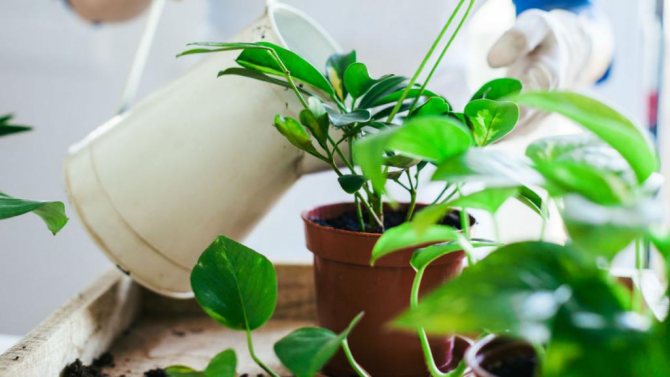

Why is it important to stop pests
Zamiokulkas leaves are covered with wax. It is a protective barrier against parasites. But if a plant affected by pests is nearby, the zamioculcas will still become infected. Most often it is harmed by aphids, mealybugs, scale insects and spider mites. In waterlogged soil, next to the rotten tuber, podura and larvae of mushroom mosquitoes start up.
Table: parasites that force the plant to rot, turn yellow, dry, stop developing, even die
| Pest | The appearance of the parasite | Symptoms of defeat | Fight | Prophylaxis |
| Spider mite. It feeds on plant sap | A tiny, barely visible insect | Signs of its presence are white spider webs and reddish-brown spots on the leaves. The plant stops developing. Mites breed quickly in a dry, poorly ventilated area | Traditional methods - infusions of tobacco or soap - are not very effective. Spray the plant with a solution of a systemic insecticide, for example, Intavir, Nearon or Sunmight. | For prevention, wash the zamioculcas under the shower, these insects die from moisture |
| Mealybug. Sucks juice from leaves, leaves a sticky discharge | Hiding under lumps of sticky white fluff-like substance | The insect sucks juice from the leaves, leaves a sticky discharge, on which sooty fungi can develop | Remove pests by hand using a damp cloth. Then wipe or spray the plant with a mild alcohol solution. If the lesion is extensive, treat with insecticides (Fufanon, Intavir, Decis or Actellic). | Inspect zamioculcas regularly, especially in the offseason. This pest is afraid of moisture, prefers dry conditions. Keep the plant clean and remove any dried leaves. Plants that regularly wash their leaves are rarely affected by the worm. |
| Aphid | Small insects of various colors - white, green, brown, black. They usually settle on the back of the leaves, quickly growing to huge colonies | The presence of a sticky aphid secretion on the plant, the so-called honeydew. Withering is primarily of young leaves. Aphids are the most dangerous plant pest. These parasites, drinking vital juices from shoots and roots, can lead the plant to death. | Treat the plant with a special aphid remedy, following the instructions for the preparation, or with a soap solution with the addition of nicotine sulfate (1 g per liter). Suitable for home use: Intavir, FAS, Karate |
|
| Shield | Females have no legs, no wings, no eyes, no antennae, but they have well-developed mouth organs of the piercing-sucking type. While the females are young, and the shield covering the insect is soft, the scale insects can move. When the scutellum is ripe, insects become immobile. | At the site of the scabbard suction to the leaves, yellow specks appear, which grow in size as the cell sap is sucked out. Then the leaf turns completely yellow or turns brown, curls and falls off, the plant stops growing, the branches become bare, then the whole bush begins to dry out and eventually dies | First, wipe off insects with a damp cloth. Treat the plant thoroughly with an insecticide. It is rare to destroy the pest the first time. Process until the final victory | Good care, timely watering, frequent airing, regular inspection of stems and leaves, especially from below, timely replacement of the soil or its top layer, careful, with the quarantine time keeping, “newcomers” settling on a common window sill. Do not forget about cleanliness: dirt, dust, sticky secretions are a favorable environment for pests |
| Mushroom gnats (or flower gnats) | Small flying insects living in waterlogged soil | The mushroom mosquitoes themselves do not harm the plant. Worm-like larvae that live in the soil and feed on young roots are dangerous | To get rid of pests, you need to change the soil. Remove the zamioculcas from the pot, remove all the soil, dry the root system. Sterilize the pot and new substrate. Plant the zamioculcas again, after removing suspicious roots and parts of the tuber, sprinkle the slices with charcoal. Do not water for 2-3 weeks. | For prevention, get rid of midges indoors using Raptor, Raid, Dichlorvos-neo aerosols. Use soil insecticides Baduzan, Thunder-2 against the larvae. |
| Podura (springtails) | Jumping insects that settle in waterlogged soil | The appearance of a puff is a signal that you are pouring zamiokulkas and he is in danger. | If there are few insects, sharply limit watering, and they will die on their own. In case of severe damage, check the root system for rot. If you find a problem, proceed as in the fight against mushroom mosquitoes. | Prevention - the correct irrigation regime, granules of the drug Baduzan in the soil |
Photo gallery: a whole host of pests
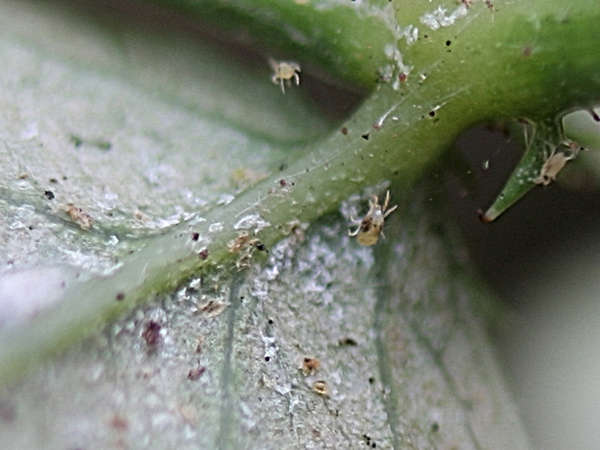

Spider mite is a very small insect that settles on the underside of leaves and sucks juice out of them
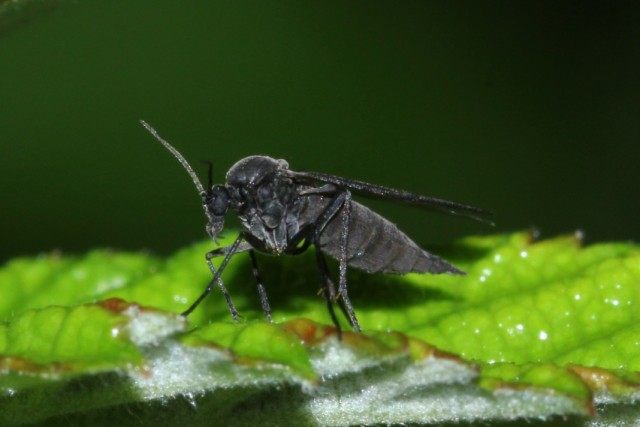

The mushroom gnats themselves (midges) are not dangerous for plants, but they carry infections, and their larvae destroy young roots


Mushroom mosquito larvae like worms eat young roots


Podura, carriers of putrefactive diseases, often settle in damp soil.


Aphid colonies destroy young growth


Mealybug feeds on plant juices and secretes a sweet liquid, which in turn serves as food for harmful fungi


The scabbard is covered with a reliable shell, so adults must be removed manually
How to save a dying zamioculcas
Zamioculcas is famous as an unkillable plant. But this is an exaggeration. If you ignore the distress signals that the flower sends, calmly watch how it withers, death is inevitable. However, a florist, attentive and sensitive to the mood of the plant, will be able to pull the poor man out of the next world.
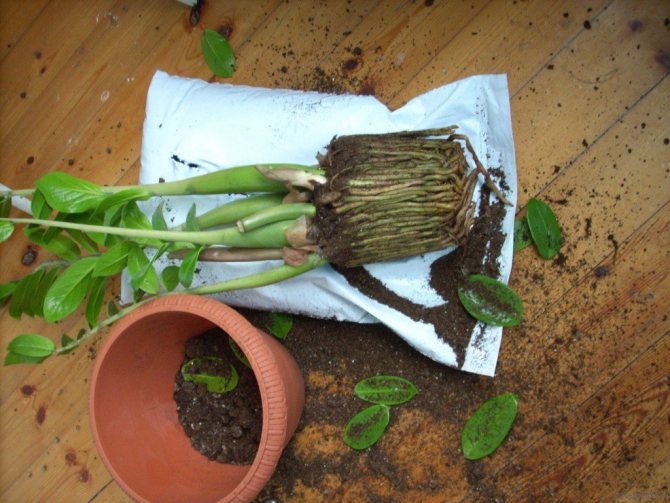

To help zamiokulkas, you will have to get it out of the pot.
Zamioculcas turned yellow, began to wither, dry out
The plant has begun to turn yellow, but the cuttings dry out rather than wither. And you certainly did not overflow the soil of your sick pet. Is the lump of earth dry and lagging behind the walls of the pot? This means that zamioculcas suffers from drought. He began to waste moisture and nutrition reserves from the tuber and the base of the leaves. Make sure of this by removing the plant from the pot. The tuber must be free of rot. In this case, remove the yellowed leaves, return the zamioculcas to the pot and pour it over by immersion in water: pour water into a large container and dip the plant with the pot there. Then let the soil dry. And only after that, start regular watering, preferably in a pan. Do not overdo it so as not to flood the plant.
Reanimating the dollar tree
- Start by examining the aerial part of the plant, inspecting the leaves for the presence of pests.
- If parasites are found, start fighting them.
- If there are no insects, investigate the underground part. Remove the zamioculcas from the pot.
- Shake the soil off the roots or wash it off with warm water.
- Pay attention to the condition of the soil. Sticky and wet means you have flooded the plant.
- Examine the tubers and roots, there is rot - remove and sprinkle the slices with crushed charcoal, gray, cinnamon, or fill with brilliant green. Before that, they can be held in a solution of manganese or fungicide.
- Dry the roots of the zamiokulkas well, leaving it out of the soil for a day.
- Transplant the plant into fresh soil with a lot of sand and do not water for 2 weeks, and then do it very sparingly, 3-4 days after the whole clod of earth dries out.
Video: saving zamiokulkas with black rotten roots
When the entire underground part rotted, it began to blacken and die
You took the zamioculcas out of the pot, exposed the root system and saw that the tubers were completely rotten. Don't give up, try to save the plant by rooting the leaves. Do not use yellowed parts for grafting, only green and tough ones. They can be rooted in a substrate with a lot of sand or in water to which activated carbon has been added.
Video: twigs gave the dying zamiokulkas a new life
Yellow foliage after transplanting
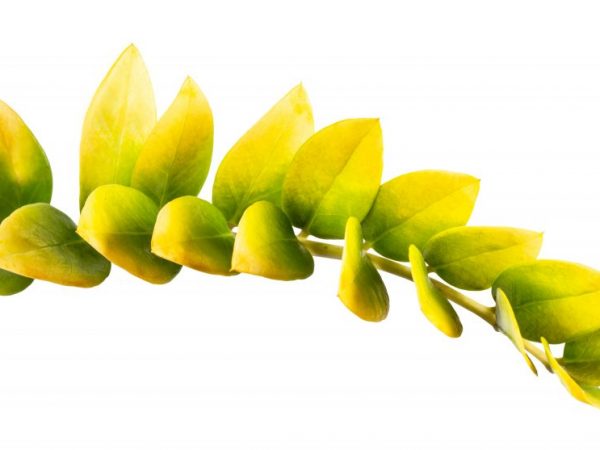

Foliage may fall off during the adaptation period
Growers often experience yellowing and foliage falling after transplanting. This may be a reaction to adaptation to new growth conditions, which is not widespread, and decorativeness is restored in about a month.
If, after a certain period, the indoor flower continues to turn yellow, the cause should be looked for in violation of the transplant rules. More often it is associated with damage to root tubers.
Necessary measures:
- the plant is taken out of the pot, the roots and tubers are examined for lesions;
- the affected fragments are cut off, the cuts are sprinkled with charcoal or activated carbon and dried in a natural way;
- the flower is planted in a potted container, preferably with the replacement of soil in order to avoid the preservation of pathogens of fungal diseases in the old one.

